
Days after gas service was abruptly cut off to a group of homes facing accelerating landslide damage, fear and anxiety are mounting in Rancho Palos Verdes that other utilities could soon follow suit.
The concern appears to be fully warranted, with Southern California Edison officials advising residents this week that service could be discontinued “if conditions warrant.”
The utility gave no indication that an electricity shutoff was imminent, but said one could occur if it’s no longer safe to keep their lines energized — leaving many residents on edge about what such a decision would mean for the future of their oceanside community.
“It’s like a domino effect,” said Mike Hong, a Portuguese Bend resident whose home was among the 135 that lost gas this week. “This could be devastating for us, financially and emotionally.”
It’s also an issue of community safety, city officials said, because electricity is key for telecommunication lines, the sewer system and the fleet of pumps that help mitigate ongoing land movement by expelling the groundwater that geologists say causes it.
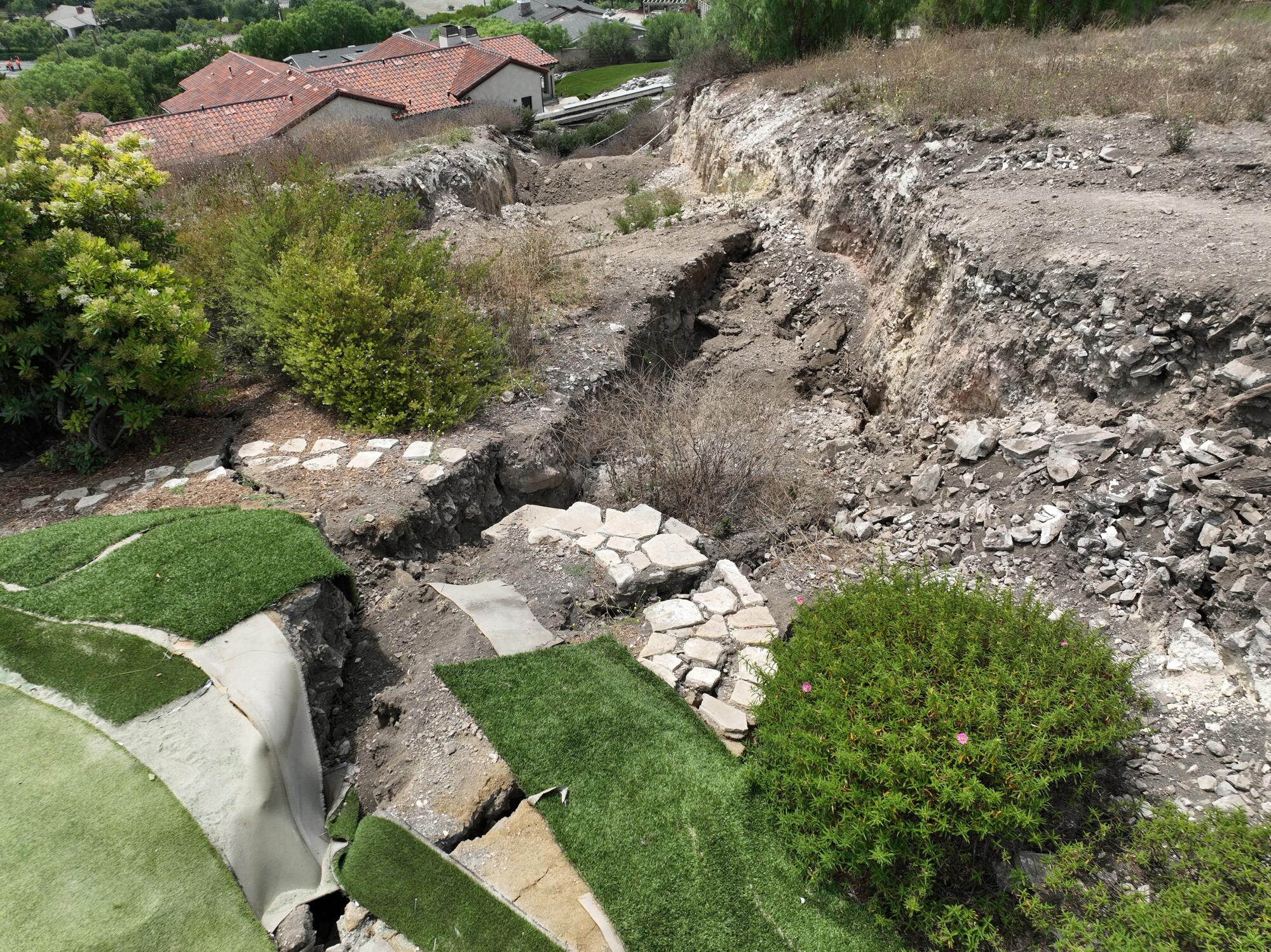
“While we appreciate SCE sharing this update with the community sooner rather than later, we have concerns about its many implications for the hundreds of residents living in neighborhoods in the landslide area, as well as city services,” Rancho Palos Verdes officials wrote in an update online this week. “A power shutoff would be detrimental to the entire community. ... The earliest possible notice to the community of any potential shutoffs is paramount. Our residents’ livelihood and homes are at stake.”
At a community meeting Wednesday night, residents who are already facing a growing threat from the land movement — major damage to their homes, roadways, landscapes and infrastructure, including continual gas leaks and water main breaks — expressed anger, fear and desperation to city and utility officials. But mostly, homeowners were resolute in their desire to stay if at all possible — though that would be much easier if the utilities committed to their region.
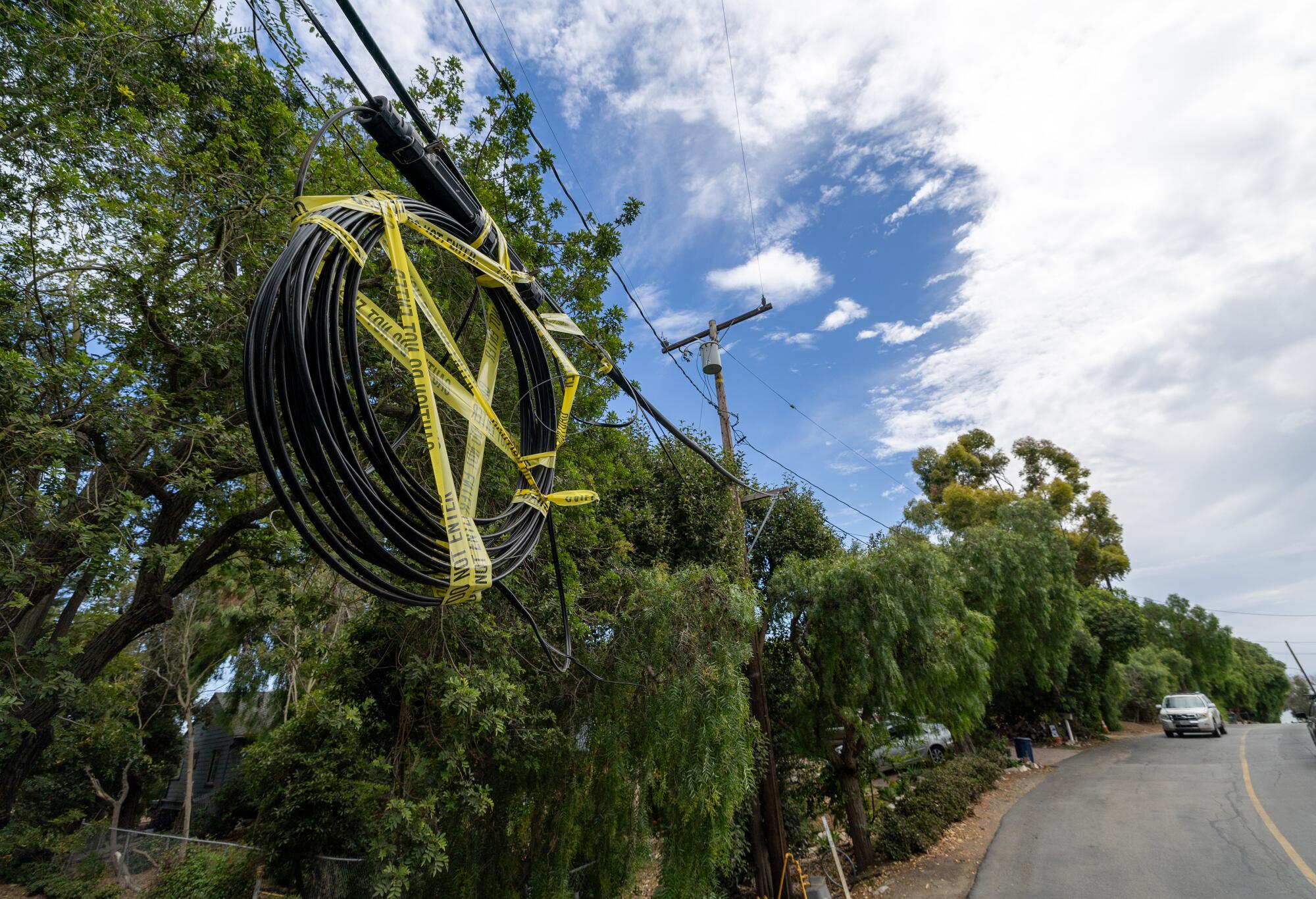
“It’s not a private for-profit corporation, it’s a utility company,” Hong, 65, said. “Their job is to serve the whole community. ... Gas and especially electricity and even more so water, if they go, then pretty much they’re abandoning our properties.”
It wasn’t clear if there was one event or break that led to Southern California Gas Co. canceling service Monday, but the utility said its team determined it was “no longer safe to operate” in the area.
At the community meeting, Rancho Palos Verdes’ city manager, Ara Mihranian, and several residents urged SCE to minimize any potential electricity shutoffs however possible, including splitting circuits into smaller sections. Others asked that the utility set up a local command center or disaster response hub to more quickly respond to any outages or infrastructure breaks — something the California Water Service has done.
Celina Luna, SCE’s representative at the meeting, didn’t commit to setting up an independent command center. The utility, however, is working to make its electricity more resilient in the shifting landscape, she said, though she noted designs wouldn’t be complete for at least three months. Many of the almost 200 residents in attendance scoffed at that timeline.
“We are in a beyond-design” situation, Luna said. “Our grid is designed to be on solid ground.”
In SCE’s letter to the community Tuesday, the utility said it will “continue to serve your community as long as it is safe to do so.”
“The ground movement affecting your neighborhood has created unsafe and hazardous conditions, which have already impacted SCE’s infrastructure, causing power poles to lean and power lines to fail,” the letter said. “The impact on SCE’s equipment caused by these hazardous conditions increases the risk of system failure, fire ignition or other public safety hazards.”
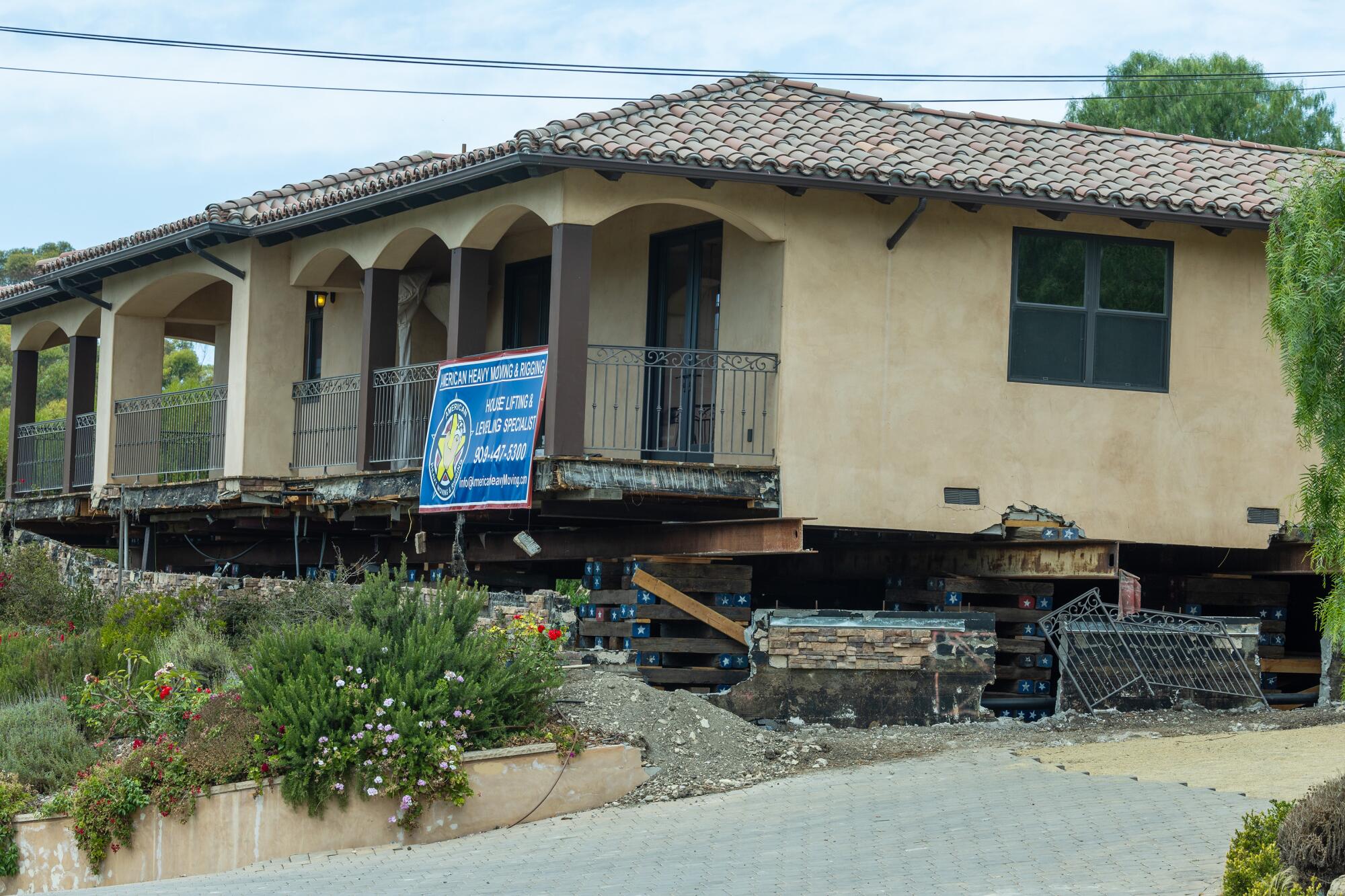
The utility has already cut power to three homes in the upper Portuguese Bend neighborhood, where up to a foot of land movement per week has been recorded in recent months, according to the city geologist’s latest report.
“We needed to de-energize the power because of accelerated ground movement causing unsafe and dangerous conditions,” said Reggie Kumar, another SCE spokesperson. He also noted that although large areas of the region are powered by the same circuit, the utility already has devices in place that can segment power.
Hong, like many of his neighbors, has been scrambling to find a way to take a hot shower and cook dinner since the gas shutoff. He is working to switch his gas-powered appliances to propane — but he’s quickly finding it’s not a quick, or cheap, process.
“Had we had some longer forewarning, we would have been able to do it,” Hong said. “Now, after the fact, we’re trying to catch up.”
Luckily, Hong and his wife have a camper’s electric hot plate that they’ve been able to use in the meantime, and friends have offered up their homes for a break.

Many residents are also starting to look into solar panels to provide their home’s electricity. Installing them is another expensive and time-consuming process, but one that Hong and others are willing to pursue if it means staying in their homes.
“At least there’s a solution,” Hong said. He worries, though, what will happen if their water is cut off.
“When the water goes out then it’s game over,” he said. “It’s essential not just to life, but it’s essential to keeping a community alive.”
California Water Service officials say they have no plans to pull their service.
“We continue to repair main leaks that occur due to the land movement — both to keep providing water for residents’ everyday needs and also to maintain water service for fire protection,” said Yvonne Kingman, Cal Water spokesperson. She said the utility is still working on moving its water pipes above ground, recently completing one project on Vanderlip Drive and along parts of Palos Verdes Drive South.
But Mihranian noted that the utility requires electricity for some functions, including its leak detection system.
“So that’s a concern, especially in the event of emergencies,” the city manager said. “We need to start ordering generators.”
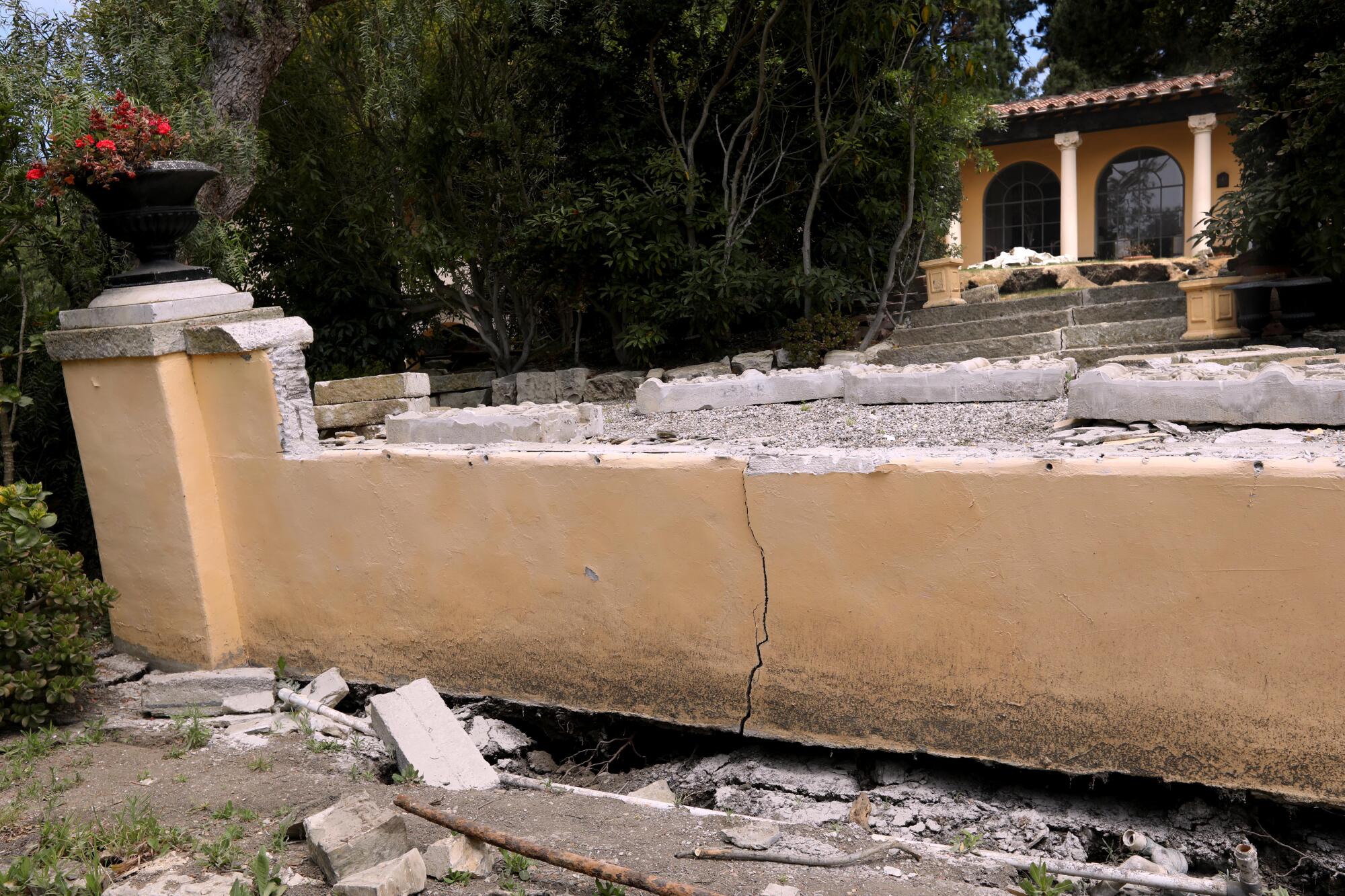
Huma Ahmed, who lives in the Seaview neighborhood — which hasn’t yet lost any utility services despite experiencing increasing land movement — said she’s most worried about how emergency communications will go out, especially to the neighborhood’s seniors and most vulnerable residents.
“We understand there’s a natural disaster, and that’s what this is,” Ahmed said. “We need enough time to arrange for things.”
A lifelong resident of the area, Ahmed worries that losing utilities is “only a matter of time.”
“But when does that go into effect is the question?” Ahmed, 50, said. “We now need to have a Plan B.... We’re thinking about it.”
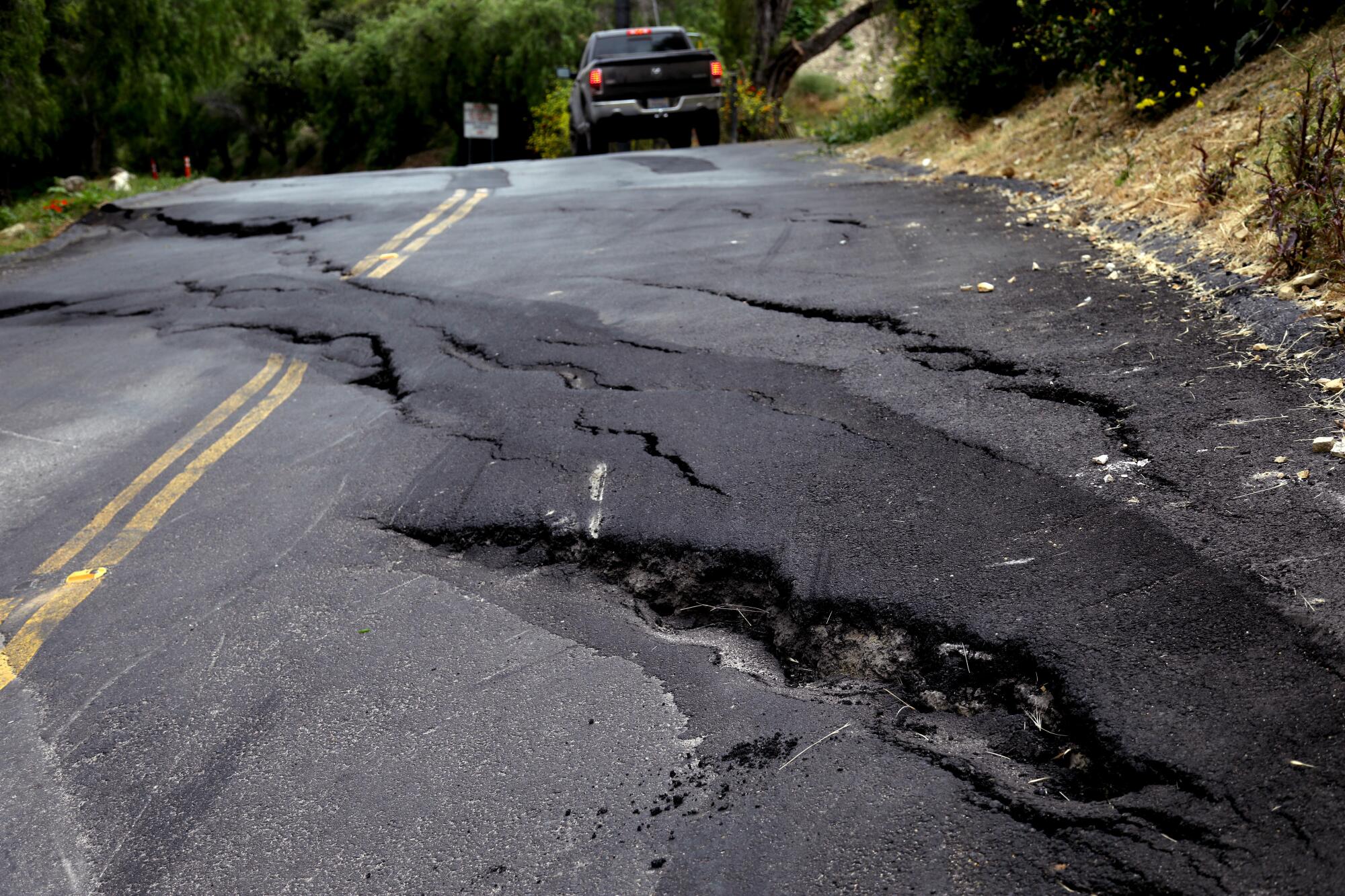
More to Read
Sign up for Essential California
The most important California stories and recommendations in your inbox every morning.
You may occasionally receive promotional content from the Los Angeles Times.











